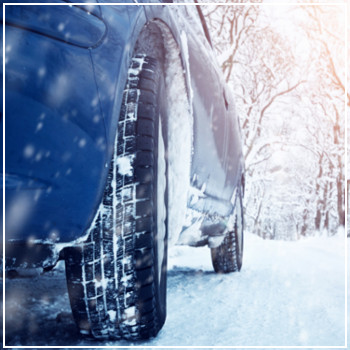 Once winter arrives, you think that snow and ice are the biggest threats to your car. In many cases, you’re right. Following the rules of the road and using your discretion in bad weather can be the difference between making it home safely and colliding with another vehicle.
Once winter arrives, you think that snow and ice are the biggest threats to your car. In many cases, you’re right. Following the rules of the road and using your discretion in bad weather can be the difference between making it home safely and colliding with another vehicle.
Yet, there’s another threat to consider: Rock salt. What makes the roads less slippery for your vehicle can end up corroding and eating away at the undercarriage. Come spring, you could be dealing with a slew of repairs.
What Happens with Salt
Your town likely has trucks go over the major roads with a salt and sand mixture, so ice melts before you start your daily commute. Ultimately, doing so makes your trip safer. Salt lowers the water’s freezing point, which causes any ice on the road to melt and prevents new layers from forming. As a supplement, the sand adds traction and prevents the salt from scattering all over.
Especially when you drive right after the trucks have been out, that salt gets kicked up and embedded in your car’s undercarriage. You can’t fully see this area of your vehicle and many owners never bother to look, so you never notice the salt clinging to the parts. In the Northeast, repeat storms and months of cold turn driving over salted roads into a daily occurrence and, in response, your undercarriage gets regularly exposed to this corrosive material.
So, throughout a season:
- Your undercarriage may start to rust. As this section isn’t coated and painted, the metal is more exposed and susceptible to rusting.
- Rock salt’s hard, angular surface scratches at the metal and leaves many fine marks.
- Corrosion and deterioration begin, causing damage to the undercarriage. The parts most at risk are your exhaust system, coil springs, subframe, hydraulic brake system, axel and muffler.
What You Can Do
Don’t think that your car simply must withstand salt-related corrosion. Rather, you can make a preparation plan with DaSilva’s Auto Body to significantly reduce damage:
- Waxing: Give your whole vehicle, including the undercarriage, a protective coating of wax.
- Pretreatment: An oil-based solution applied to exposed metal parts supplements the wax by preventing salt and water from sticking directly to the metal.
- Regular washing schedule: Throughout the season, go to a car wash that sprays your undercarriage. This helps with dislodging and washing away any accumulated salt.
- Pre-winter inspection: Now’s the time to know the state of your car. Get questionable issues and worn-out parts replaced before salt and rust rapidly eat away at them.
Whether you need detailing, an inspection or repairs, schedule your winter maintenance appointment with DaSilva’s. To learn more about our services, give us a call today.




